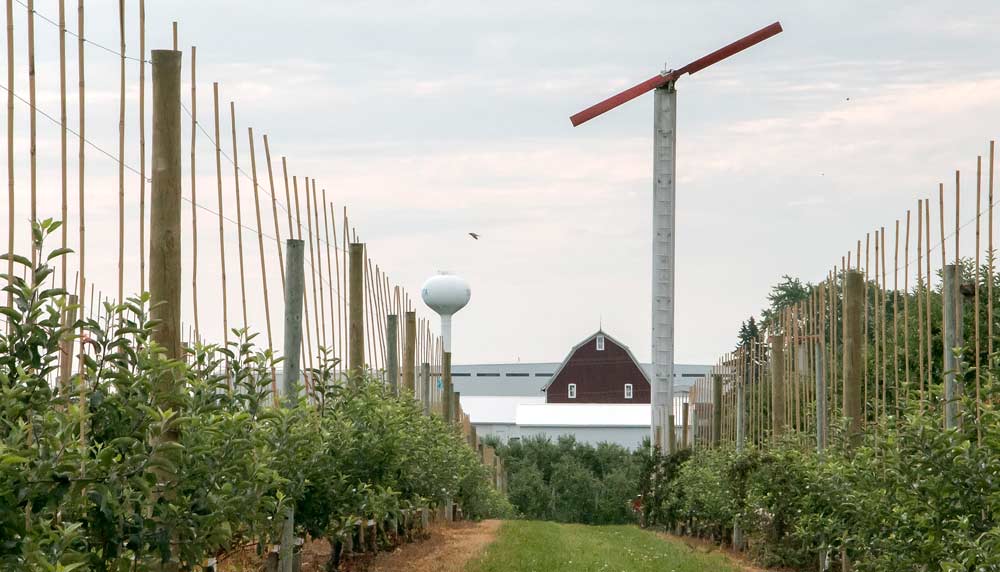
Wind machines protecting young, high-density apple orchards, like this one in Sparta, Michigan, are becoming almost as common to the region’s countryside as bulb-shaped water reservoirs and red barns. The growing region has invested heavily in frost protection measures over the past several years, and those improvements helped mitigate the effects of a severe spring frost this year. (Ross Courtney/Good Fruit Grower)
This year’s late spring frost during full bloom in western Michigan had apple growers recalling some bad memories from 2012.
But things didn’t get that bad. Instead of another catastrophe, growers this year expect to harvest a crop at about 60 to 70 percent of normal, largely thanks to new frost-control measures.
In the past five or 10 years, Michigan growers have invested heavily in micro-sprinklers and frost fans, or wind machines, that helped them cope with a May 8 cold snap that sent temperatures plummeting and farmers scurrying.
“It’s the best investment that I’ve ever made on the farm,” said Sparta grower Patrick Goodfellow. “There’s nothing that’s made me more money than a frost fan.”
Frost protection was an ever-present theme during July’s International Fruit Tree Association Summer Tour through the Ridge, a growing region of rolling hills just north of Grand Rapids.
The area, dubbed the Apple Capital of Michigan, has clay-loam, glacier-deposited soils, just enough rise in the topography for air flow, and mitigated temperatures and humidity due to Lake Michigan 30 miles to the west.
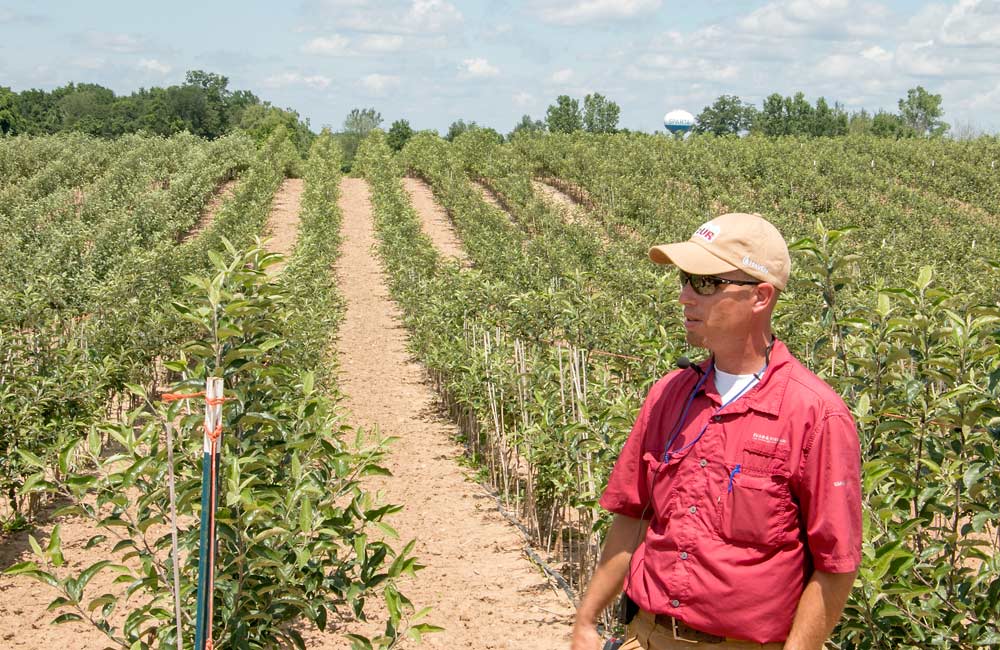
Patrick Goodfellow, one of western Michigan’s biggest advocates for wind machines, shows off his nursery in Sparta during the International Tree Fruit Association’s Summer Tour in July near Grand Rapids. (Ross Courtney/Good Fruit Grower)
Once known as Peach Ridge, the rapidly changing area is now home to mostly apples in increasingly modern, high-density plantings of high-value fruit destined for the fresh market.
Other topics included summer pruning and hedging techniques, how to train young trees, research updates and generational transitions, but frost control came up at nearly every stop during the three-day tour.
Almost everywhere the 225 attendees went, microsprinklers protected young blocks while wind machines competed with onion-shaped municipal water towers for prominence on the horizon.
“We have about 500 wind machines, which is new,” said Phil Schwallier, a Michigan State University regional extension specialist and association board member. “Growers have been investing in wind machines in the last eight to 10 years, and they keep increasing that number.”
He expects another 40 or 50 machines before next spring.
History
Severe spring weather has been known to cause significant crop losses on the Ridge.
The years 2010 and 2012 are never far from memory. In 2012, growers lost 90 percent of apple and tart cherry crops after temperatures surged, initiating bloom a month early, then dropped below freezing for 21 nights.
But even those events weren’t new. It’s the Midwest, where cold weather surprises nobody.
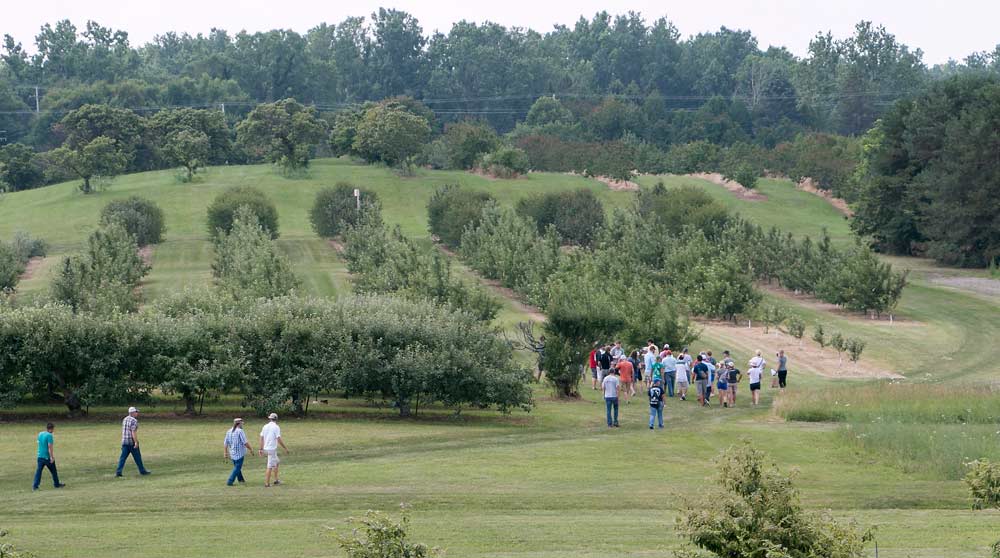
Tour attendees amble through plant pathogen test blocks at the Michigan State University trial farm in East Lansing. (Ross Courtney/Good Fruit Grower)
However, horticulturists and meteorologists once believed the region’s common windy conditions did not allow inversion layers and therefore frost fans wouldn’t help much.
New, sophisticated local weather networks that update data every five minutes have since debunked that assumption, Schwallier said.
Inversions have been happening more than they realized. Also, climate change has ushered in more unpredictable weather overall, while the industry has been evolving from bulk processing fruit to high-dollar fresh varieties and training systems more sensitive to cold.
So, over the years — both before and after 2012 — growers have been adding wind machines, microsprinklers and insurance policies, among other steps to make their annual production more consistent.
They have to, they said. Markets are fickle. If growers can’t deliver fruit one year, their customers might never return.
Wind machines are expensive. They run between $37,000 and $40,000 each, but the price of not having them is even higher, said Bill Nyblad, a grower in Kent City.
“When you look at spending the big dollars … to put in these really intensive, high-end systems, frost protection is definitely a part of the cost,” he said. “It can’t be optional. You have to do everything if you’re going to put in that kind of dollars.”
He has seven wind machines on 500 acres, leaving some areas of his farm exposed. This year, he anticipates about an 80-percent crop, with roughly 25 percent of that scarred and russetted by frost.
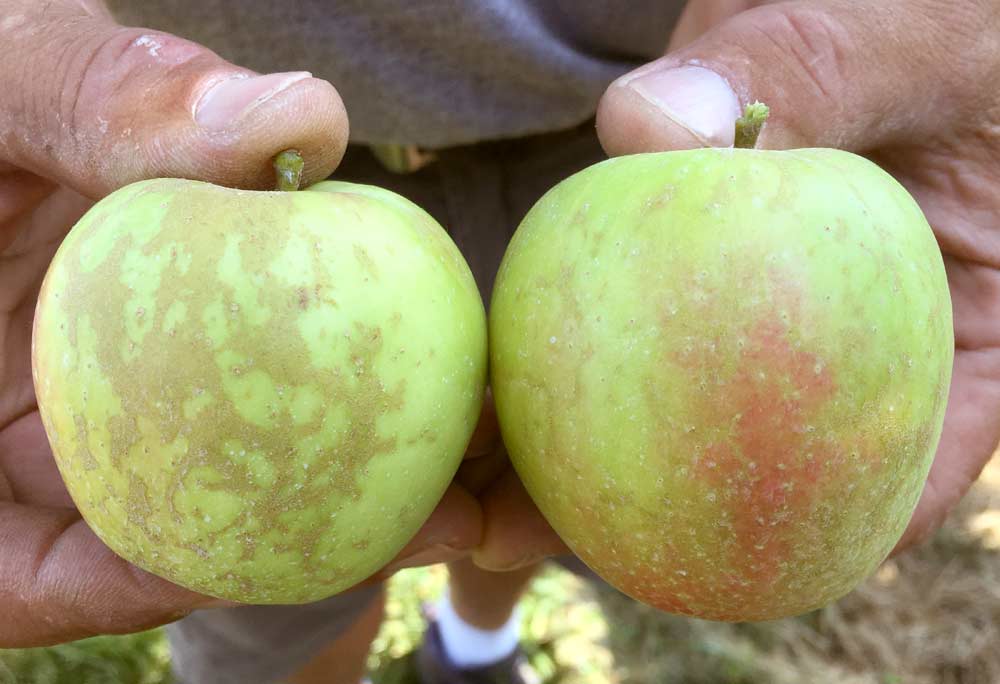
No frost measures are perfect. These apples in Greenville show signs of frost damage, including russetting. (Ross Courtney/Good Fruit Grower)
Buying more machines gradually, as he can afford them, is part of the business plan for the pay-as-he-goes farmer.
“We buy wind machines when we need to decrease our income,” he said.
This year
The spring of 2017 had been looking pretty good in Michigan: Weather started warm, bees were working, flowers were blooming about two weeks ahead of schedule and growers coaxed young orchards into fruit set.
But early morning on May 8, a dry, cold front swept in and dropped temperatures to 25 degrees with a dew point of 18 degrees. “We knew we were in trouble,” Schwallier said. “Mother Nature was going to slam us.”
Besides the frost, temperatures remained low throughout bloom.
In the areas with no protection, growers found a lot of dead flowers and fruit. Often, apples that survived developed rings, cracks and russet marks, hurting marketability.
In places where growers had fans or micro-sprinklers, damage was much less. Micro-sprinklers sometimes helped even more than wind machines.
The cold weather came with a dry wind, so adding humidity to the air around the base of trees helped stave off some damage.
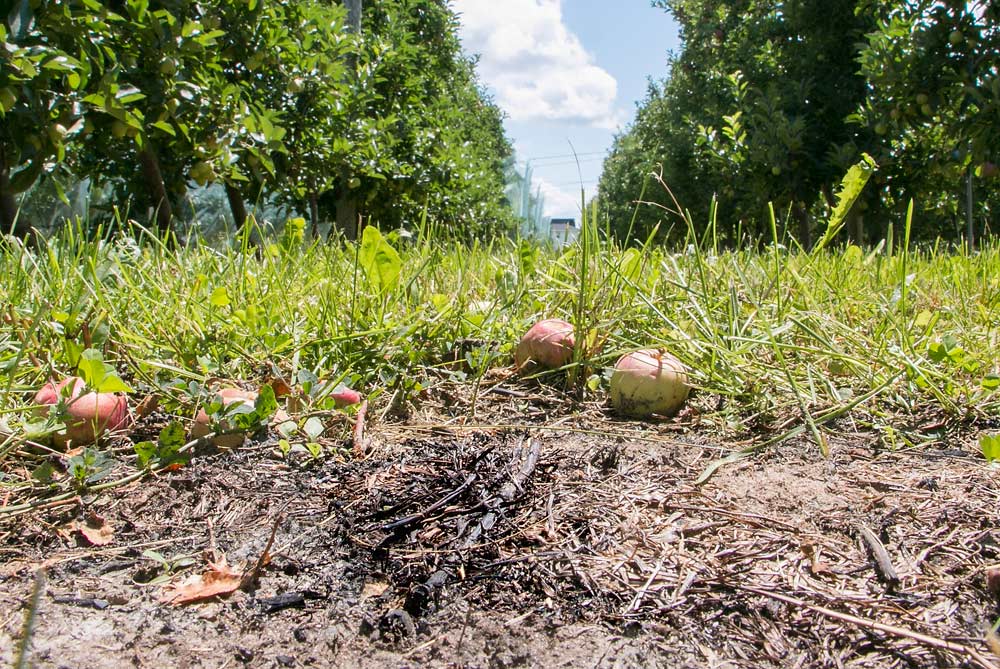
Scorched spots in row grass show where crews at the Schwallier’s Country Basket farm in Sparta used wood fires to protect trees from frost. (Ross Courtney/Good Fruit Grower)
In reaction, growers cut back their blossom thinning, knowing they would have to hand thin green apples once they started showing signs of frost damage.
Also, growers have been applying more growth regulators and root pruning to control vegetative growth where they lost a crop, Schwallier said.
Goodfellow, the Sparta grower, credits the fans for saving nearly his entire crop.
“The frost fans for me worked quite well this year,” he said to the IFTA tour goers. “I’d say on this farm, there’s pretty much potential for full crop.”
Goodfellow purchased his first wind machine in 2006 and now has 22 with plans for 10 more.
He views each year of farming apples with frost fans as half the cost of not having them — without fans, not only would he pay by losing his crop, he would break down and buy the frost fan afterward anyway. By that reasoning, “wind machines are free,” he said. •
Wind machine tips
Frost fans cost as much as $40,000 each. To maximize the benefits of that price tag, Sparta, Michigan, grower Patrick Goodfellow, who is regarded as one of western Michigan’s unofficial experts on frost fans, or wind machines, offers the following pointers for growers considering new installations.
The rule-of-thumb estimate of one fan for every 10 acres is not good enough, Goodfellow said. He spaces them every 600 feet apart, even though most offer a 350-foot radius on paper.
Start by placing them in low areas, but don’t assume hilltops are safe. “There’s not one acre that’s too good for a wind machine.”
Position them so coverage areas overlap to make up for shifts in wind direction. He stations them for 120 percent coverage.
Fans work better together. Seven fans on 70 acres do more than one fan on 10 acres, he said.
Frost fans not only protect fruit from frost, they improve fruit quality by limiting russetting and typeyness. “It helps with fruit finish,” he said.
– by Ross Courtney






Hi I am from Iran in touch with you and I am apple orchard apples on a brown spot that I think the spring is cold, there is no cure for this spot thanks
Sorry spot that I just like the picture on the apple that there are two apples next to each other .. thanks